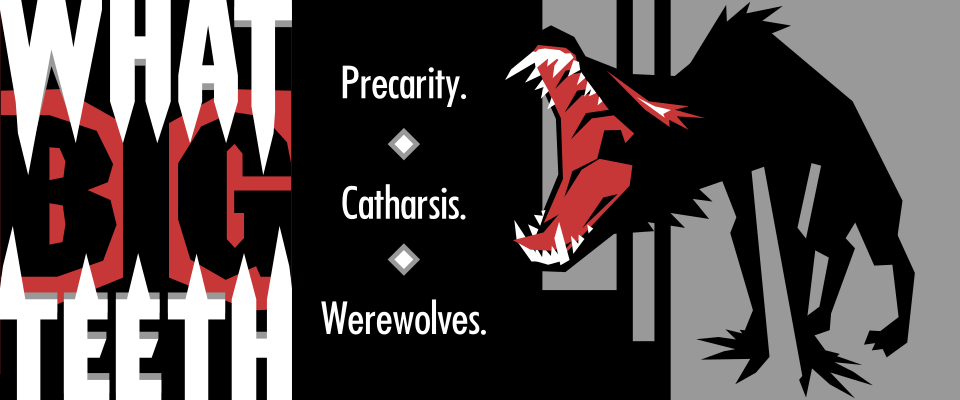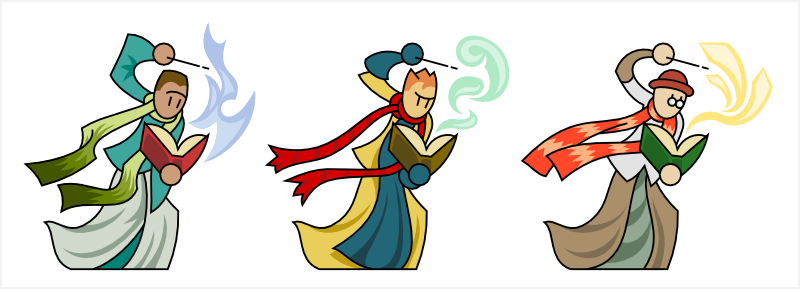The CCG model of selling randomised booster packs of cards with some common and others rare is an exploitative one. Its exists to bleed money from you, creates competitive spending amongst friends, is poisonous to game balance and turns buying a game into an extended gambling session. If the game blossoms it creates predatory secondary markets and if it folds you’re left holding half a game that nobody plays.
I take all that for granted. It’s all true, but it’s old ground. What’s interesting to me is all the incidental positive features the booster pack model has.
 Ease of stocking.
Ease of stocking.
Random blind packs is a great way to distribute a large set of cards from the point of view of the shop. There’s no danger of people cherry-picking the desirable packs and leaving them with half a box of shite they can’t move. It’s easy to order in and keep in stock. They’re priced low enough to be impulse buys, but big spenders will also buy them in bulk. And anything this good for the shop is good for the consumer that wants to be able to buy their cards somewhere.
Hiding complexity.
Specialised cards that only work in very specific decks, or deceptively strong cards with big drawbacks are fun, but you don’t want them in every deck. The common/rare model allows you to put your simple and versatile cards at common, and your weird stuff at rare. This ensures that people don’t end up with a collection of theoretically powerful cards but unable to build a playable deck.
(Yes, I know they also hide the most powerful simple cards at rare, but I’m concentrating on the positives, remember?).
No information overload.
A set of CCG cards can easily contain over a hundred playable cards, even after you discount the unplayably bad ones. That’s a lot to take in at once. Exposing people to a booster pack’s worth at a time lets you ease them in without scaring them off.
And duplicate commons mean that the amount of extra information you’re exposed to with each pack falls off, while at the same time the rare slot makes sure that at least one card in the pack might still be new to you.
Lowers barrier to entry.
To someone with a decent collection, the commons are worthless – they buy the booster for the rare, and maybe the uncommons. The business knows this and has priced the packs accordingly. The price is based on game value per pack, not just the number of pieces of cardboard. The commons are filler.
But to someone just starting in the game, every card is new and playable. Commons, even crappy ones, are freebies that fill up an otherwise empty deck slot so that they can get playing as soon as possible, even if their decks are a bit duff. New players get more value from each pack than experienced ones, allowing them to buy-in at a bargain price.
Duplicate commons also mean that the more you spend, the less value you get for your money. This monetises your biggest fans and makes sure that they spend ten times as much as the casual player, rather than just 2-3 times as much. Clever. Sleazy, but clever. On the other hand, experienced players with boxes of duplicate cards tend to donate them to new players to help them into the game. Which is nice.
Drafting/sealed deck (aka Limited).
These are a way to play that takes advantage of random boosters. They limit the card pool to a number of unopened boosters and test your ability to make a deck using a limited collection of uneven cards. And they’re really, really fun. And a huge skill-tester. The people who are good at limited play are much, much, much better than the people who are bad at it.
And it’s not like you just throw the cards away after you’re done with them. It’s a way to get extra play out of your purchases. In fact, some players like limited so much that they don’t even play the “real” game – they sell their cards on to pay for more unopened packs.
Limited play is a big enough deal that the makers of Magic: The Gathering design their sets around it. And if you’re really into the game, this can almost justify random packs as something other than a money-spinner. It adds that much play value, and it’s not an experience you can get anywhere else (deck builders like Dominion are inspired by drafting, but don’t scratch the same itch).
(But Limited is also a game that you have to pay to play *per play*. Ouch. Unless you play cube draft…)
There’s other pluses too, like how surprises are intrinsically fun, and randomisation encourages trading which builds community. But those are more obvious and so not as interesting to me.
So.
In my head the question is how you might use these good points without the exploitative business model. (I’m aware of living card games, where packs aren’t randomised and you expand your collection with honest, simple purchases. But I’m specifically talking about the randomised booster model, not customisable deck card games in general.)
The only thing I reckon justifies the random booster model is that without it some damn fine games wouldn’t be profitable enough to exist. But then there’s also shitty games that can coast on how profitable a CCG can be so flip a coin, omelettes and eggs.


 Ease of stocking.
Ease of stocking. I'm sticking with doing vector colouring/shading, and I made the linework for these with that in mind. So I knew I'd be putting a coloured pattern on the scarves, and that I could demarcate #1 and #2's hair without needing to blackline it. Which is new. I used the "spare" lines left in the budget to put a little more expression on their faces. Not sure about that. I wonder if it would be better to do it on the shading layer. I think it's only a matter of time before I give up on the no-mouth line-eyes look. Style erosion.
I'm sticking with doing vector colouring/shading, and I made the linework for these with that in mind. So I knew I'd be putting a coloured pattern on the scarves, and that I could demarcate #1 and #2's hair without needing to blackline it. Which is new. I used the "spare" lines left in the budget to put a little more expression on their faces. Not sure about that. I wonder if it would be better to do it on the shading layer. I think it's only a matter of time before I give up on the no-mouth line-eyes look. Style erosion. I think these satyrs are knights who have gone questing into the woods and been cursed for their unchivalric vices. In this case, the knights were drunkards. I could easily conceive of gluttonous pig-monsters and maybe slothful bear-men?
I think these satyrs are knights who have gone questing into the woods and been cursed for their unchivalric vices. In this case, the knights were drunkards. I could easily conceive of gluttonous pig-monsters and maybe slothful bear-men? Thinking about a modular roguelike that is expanded by people playing it, which isn't new by any means. Maybe some kind of "deck-building" game where you're a summoner building up a synnergistic horde of minions from prefixes, suffixes and modifiers that you gain as you progress through the dungeon. If you reach the end of the game, then your "deck" becomes a blueprint for a dungeon floor. ie: come up with a good ice "deck" and maybe the next player will have to travel through an ice level populated with those monsters.
Thinking about a modular roguelike that is expanded by people playing it, which isn't new by any means. Maybe some kind of "deck-building" game where you're a summoner building up a synnergistic horde of minions from prefixes, suffixes and modifiers that you gain as you progress through the dungeon. If you reach the end of the game, then your "deck" becomes a blueprint for a dungeon floor. ie: come up with a good ice "deck" and maybe the next player will have to travel through an ice level populated with those monsters.